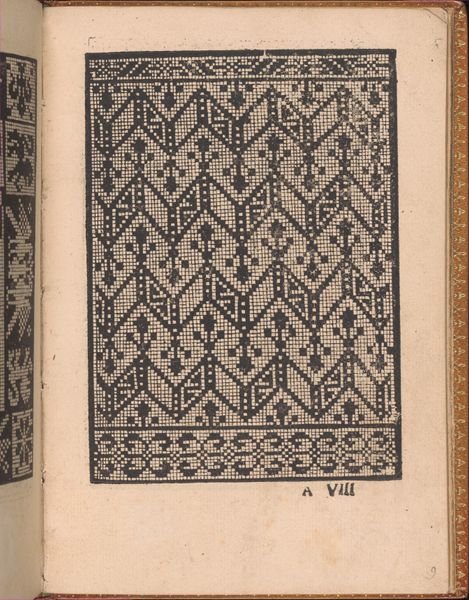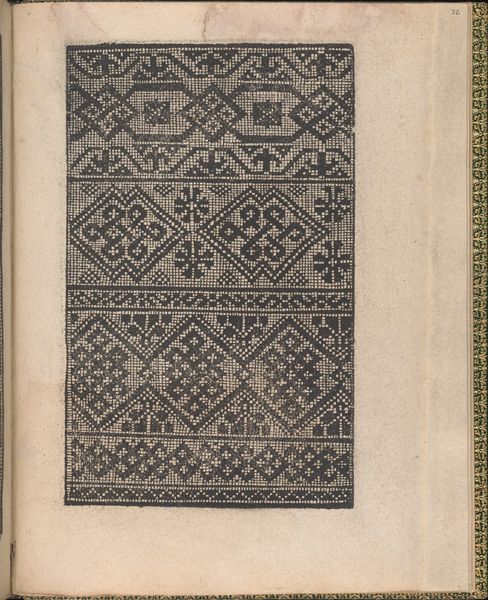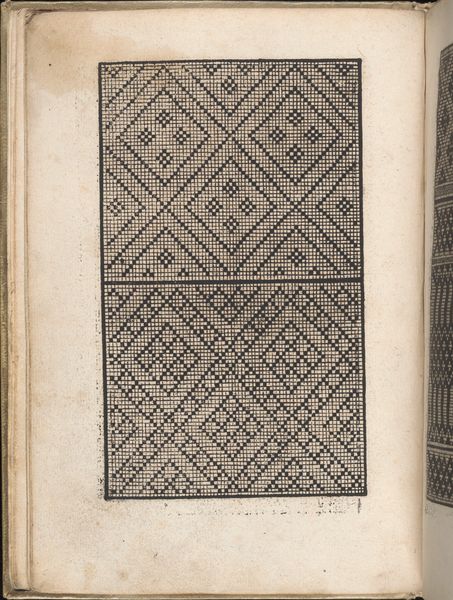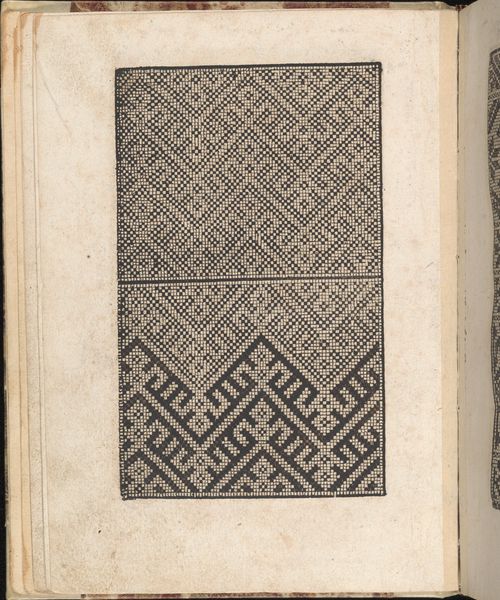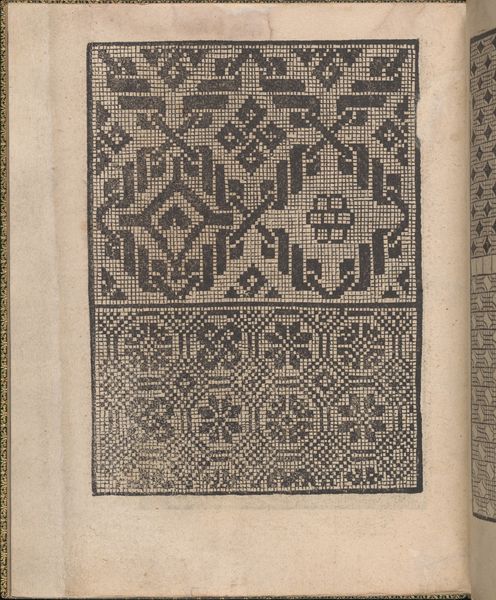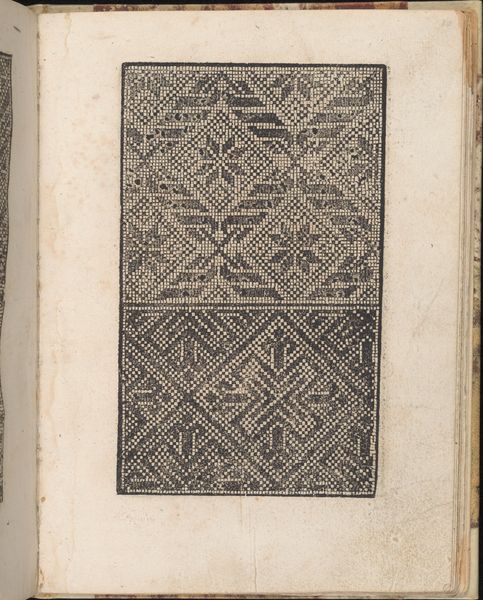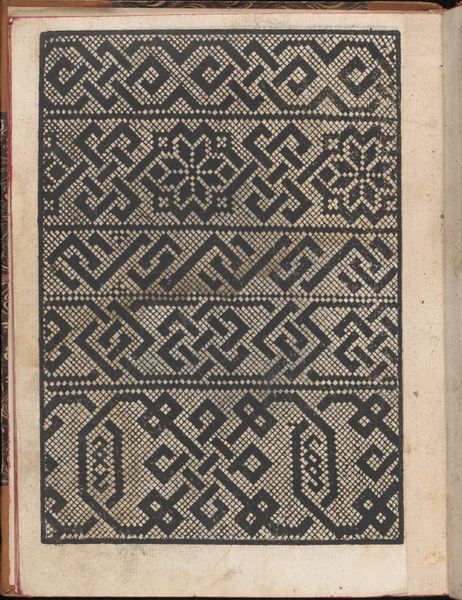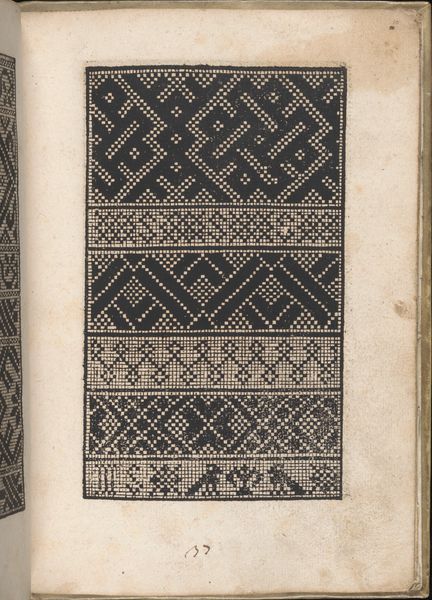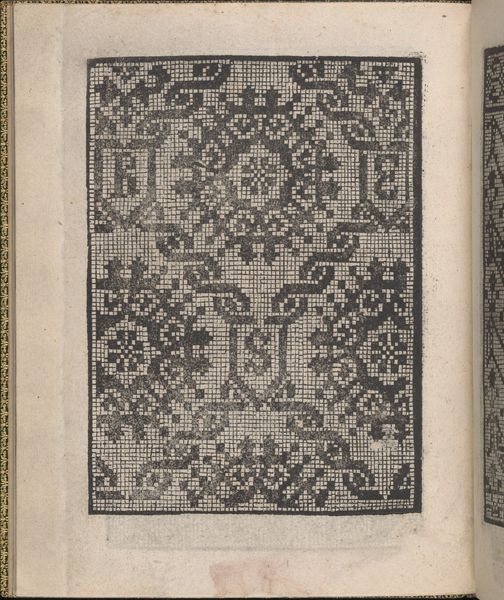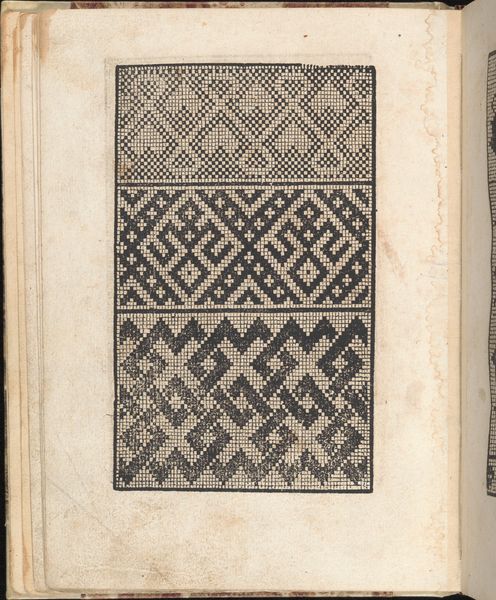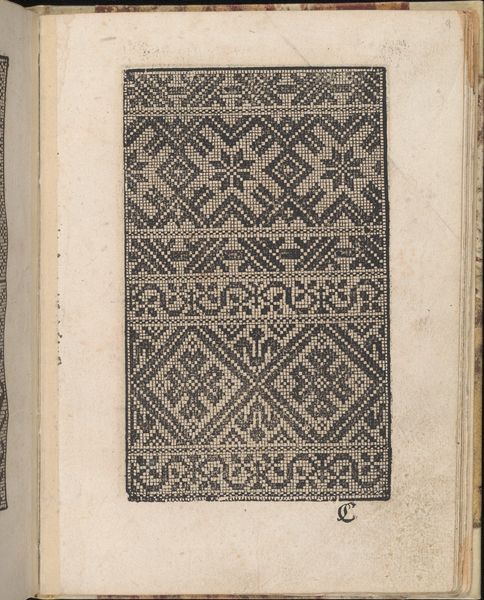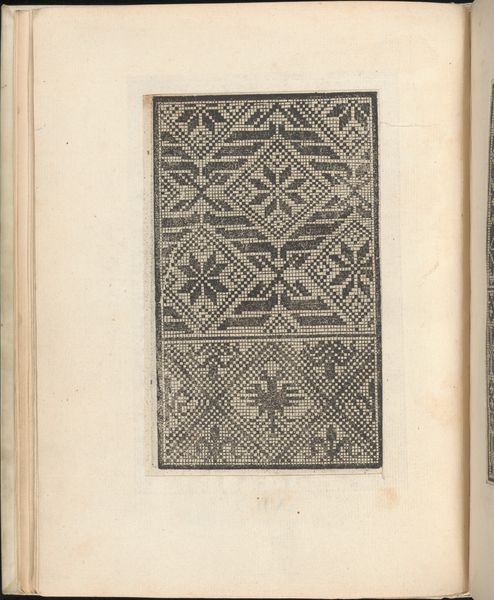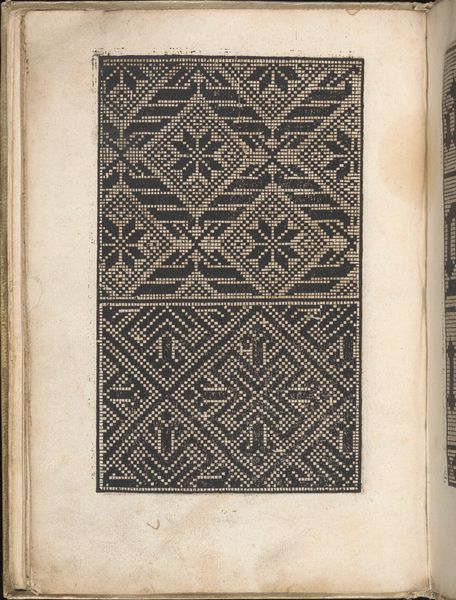
Ornamento delle belle & virtuose donne, page 11 (recto) 1554
0:00
0:00
drawing, graphic-art, ornament, print, intaglio, paper
#
drawing
#
graphic-art
#
ornament
# print
#
intaglio
#
paper
#
11_renaissance
#
geometric
#
line
#
decorative-art
#
italian-renaissance
Dimensions: Overall: 7 1/2 x 5 7/8 in. (19 x 15 cm)
Copyright: Public Domain
Curator: This is a page from Matteo Pagano’s "Ornamento delle belle & virtuose donne," created in Venice in 1554. It's an intaglio print on paper, a geometric pattern designed for lacework and embroidery. Editor: Whoa, dizzying! It looks like a medieval video game level. All those tiny squares creating diamond shapes—my eyes want to unfocus, but can’t. I'm weirdly mesmerized. Curator: These designs were part of a booming industry in 16th-century Venice. Patterns like this, easily reproducible through printmaking, catered to a growing market for fashionable garments and textiles. Think of them as the original downloadable content for artisans. Editor: So, it’s functional art? That's really appealing to me. I love the idea that this wasn’t meant to just hang on a wall. It had a practical, social purpose – inspiring creativity, adorning bodies, literally shaping culture, one stitch at a time. I imagine the conversations happening around these designs... Curator: Exactly! The title translates to “Ornament for Beautiful and Virtuous Women,” revealing a direct connection to gender and social status. These pattern books offered women—or perhaps the professional embroiderers they employed—access to the latest trends and the ability to express their taste and refinement through needlework. Editor: I wonder how much freedom they actually had. Did these prints dictate fashion or liberate it? Or was it a bit of both, the design functioning like a framework where they can play? Curator: A complex relationship, certainly. The print provided a structure, a starting point, but the choice of colors, threads, and the skill of the embroiderer would inevitably lead to unique variations. It's that tension between constraint and creativity that makes this type of artwork so compelling. Plus, each object handmade through this ornament is charged by a person’s imagination and hard work. A dialogue of its own, so to speak. Editor: Absolutely. There's something about the humble practicality of this that really speaks to me. Forget your Renaissance masterpieces—this is where art met daily life, thread by painstaking thread. Curator: Indeed. A glimpse into the everyday aesthetic concerns and material culture of Renaissance women. A reminder that beauty and virtue, even then, required careful construction.
Comments
No comments
Be the first to comment and join the conversation on the ultimate creative platform.
